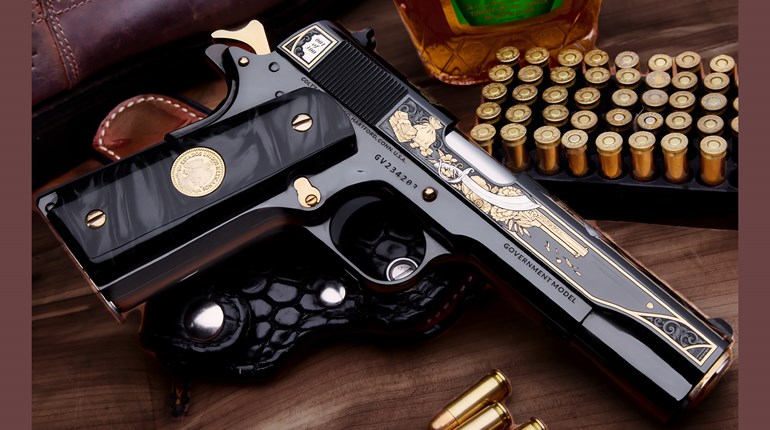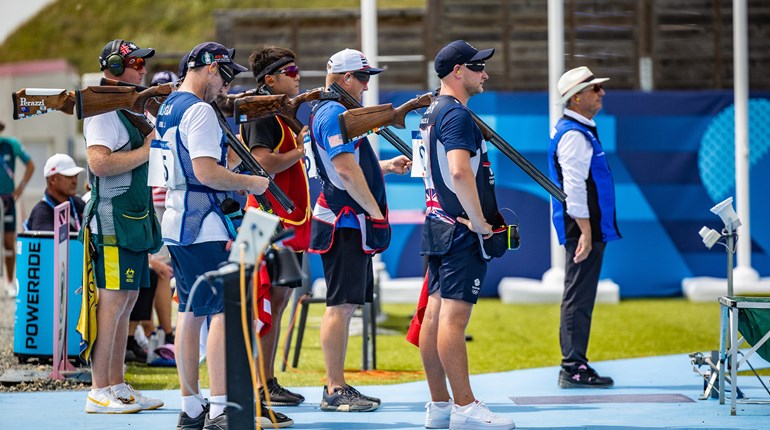
Attracting new shooters and new competitors is important for all the disciplines and for protecting our civil right to firearms ownership—it should be one of the significant goals of every club. And once we have them, it’s just as important to continue to help and encourage those newbies who need it.
To succeed, we must acknowledge that nearly everyone has getting-started jitters and we must apply some very practical and effective solutions, not merely a slap on the back and, “Aw, you’ll be OK.” Do you remember your own nervousness at your very first match? One major source of first-timer intimidation is the desire to not look incompetent in front of other shooters, like dressing for a costume party and arriving to discover it’s really a wedding.

Here are some on-the-ground suggestions I recently gave to a reader interested in Vintage Military Rifle (VMR) competition, a game created with the intent to get newbies out to the range. The comments about equipment are necessarily specific to VMR competition; other shooting disciplines require other gear, of course, and you know your game better than I do. Apply the concept of escalating minimum equipment as you think best for your specific sport.
Go with a friend
This may be the best suggestion for anyone competing in their first match, regardless of the shooting discipline. As with any undertaking, including a friend really ups the fun factor. Match directors understand this and are always happy to squad friends together on the same shooting point. Most competitions I attend are with at least one friend, and one in particular has been my regular shooting buddy at High Power matches for more than a decade. Even today, after 30 years of competing, the most fun I have is in a four-person team match or a two-person VMR Sniper Rifle match where my goal is only to outshoot my teammates.
View and preview
If possible, go to the range for some hands-on with your shooting mentor on a day when the range isn’t busy. It’s easier to communicate and focus without the frequent, loud distractions and interruptions of a busy range day.
Let’s admit it: target shooting isn’t much of a spectator sport. However, being prepared for your first match will allay much of your apprehension, so attend a match just to watch and take notes. You may feel less pressure if you make your first competition an informal club match. Ask questions, but not of the guy who’s setting up on the firing line—he wants to focus on his preparation and shooting. Pay attention to the courses of fire, listen to the range commands and watch how the shooters respond—there’s comfort in knowing what to expect when your turn comes.

The first time you compete, ask to be placed on the second relay, for the same reason: time to observe others so that you can respond appropriately. To preview range commands and responses beforehand, get a copy of the rule book for your chosen discipline from the NRA or CMP. For VMR, a free downloadable copy is available at thecmp.org/wp-content/uploads/CMPGamesRules.pdf.
Bring what you need
Dedicated competitors tend to bring lots of gear to make their game easier and more enjoyable—and sometimes just more comfortable. A newbie can be overwhelmed thinking he needs all that stuff, but much of it isn’t really necessary to shoot.
The bare-bones necessities for shooting VMR games are a rifle, ammo, and eye/ear protection. After those, the minimum “really should haves” are something to lay on and binoculars or spotting scope. The former could be a simple 6-foot section of carpeting, but a shooting mat works better and is kinder to the elbows in prone fire. You’ll want the binos or scope to see bullet impacts when firing sighting shots, and depending on whether the range has pit service (people scoring targets during shooting), you may need them for scorekeeping duties from behind the firing line.
Using a sling (properly) will raise your scores to help keep up with the old hands. A notebook for jotting down need-to-knows for the next match is always a good idea, and a gear bag or backpack keeps everything together.
A beginner VMR gear list should look like this:
Must have
-Rifle
-Ammo
-Eye and ear protection
Should have
-Mat or something to lay on
-Binoculars or spotting scope
-Sling
Nice to have
-Notebook
-Gear bag
Avoid all dumb mistakes
Reality check: at most matches someone makes a dumb mistake, and every long-time competitor has made one. Dumb mistakes are exemplified in forgetting to bring ammo, clips, magazines or another important piece of gear. Cross-firing onto the wrong target seems to occur at least once at a High Power match rapid fire or 600-yard stage. At the most recent championship vintage sniper rifle team match I attended, my partner failed to fire a shot within 20 seconds of the target appearing, costing us 10 full points. I once watched a competitor cause his M1 Garand to slam fire at the command, “With one round, LOAD!” Nothing gets attention like a gun shot when there shouldn’t be one.

You will make a dumb mistake. As long as it isn’t a safety violation, no reasonable person will think a newbie is incompetent. Rather, any dumb mistake will likely be a source of mild amusement and the silent reflection, “Geez, I remember when I did that …”
Be reasonable
Something I say to disappointed or frustrated new VMR shooters is, “Have reasonable expectations of yourself and your old rifle or else it isn’t fun.” Battle rifles with original barrels typically shoot two, three or four MOA—expect plenty of shots to land out in the white rings at first. After a few matches set a goal to just keep all your shots in the black scoring rings—when you achieve that you are becoming someone to beat.
Competition isn’t combat and it isn’t lifesaving, so in the final analysis there really isn’t much to stress about; separate your purpose—simply to shoot—from your overall goal—to have fun—and you will keep your enjoyment in the sport no matter your score.

































